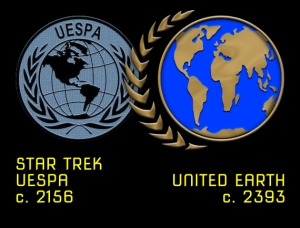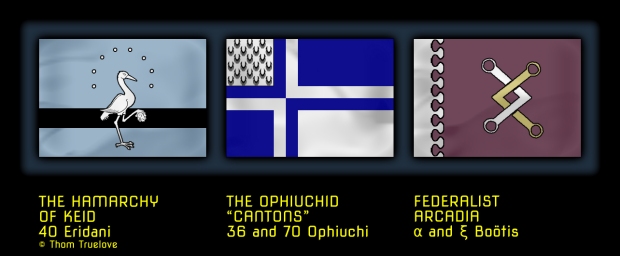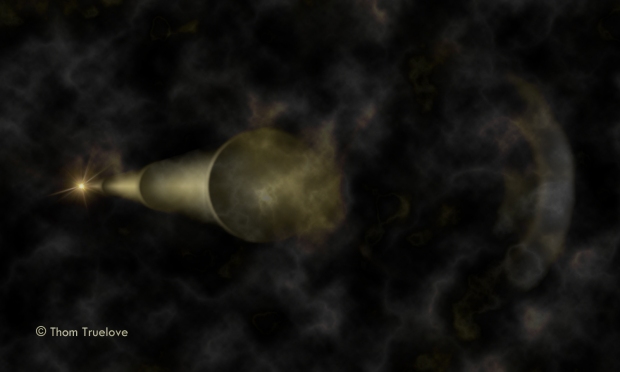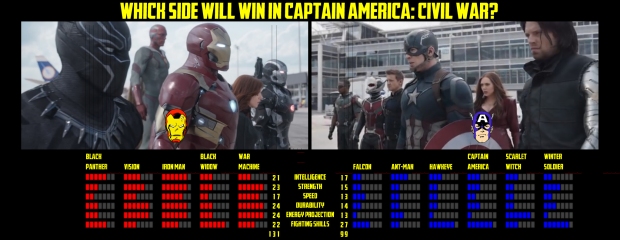Not being an economist suggesting an alternative to existing answers to the problem of unlimited want v limited resources would very likely not provide a utopian blueprint. With that in mind, ideal societies are probably best left as part of the domain of satire and/or fantasy. Astral – the working title for my science fiction novel in progress – does not attempt to paint a grand and perfect future for humanity the setting. Nor is the setting a dystopia.
Blade Runner (Philip K. Dick, K. W. Jeter) mentions off-world colonies and the supposition is that they are not all people might hope. In Joss Whedon’s Firefly/Serenity we’re told, “Earth That Was could no longer sustain our numbers; we were so many.” There’s a streak of disposable planet in science fiction that my first love in the genre – Star Trek – avoided almost completely. The inhabitants of Earth had, in fact, abandoned a dangerous courtship with self-extinction and Starfleet’s mission to seek out strange new worlds was not just about mineral rights.

As mentioned in prior entries here, the world(s) of Astral spans about 60 solar systems. The motivation for expansion splits the difference between Earth being used up and something Neil deGrasse Tyson said about a year ago (Oct. 2015): “If you have the power to turn another planet into Earth then you have the power to turn Earth back into Earth.”
Most science fiction does not concern itself with the cost of putting fleets of ships in space and terraforming exoplanets. Again, not being an economist, I’m not planning on making any estimates in that regard. However, just as I’ve been musing on alternative political structures, the future on Earth’s colonies is not mute about the downside of capitalism and its contentious cousins.
There are at least half a dozen private entities reinventing space travel and while that’s thrilling it also based on some aspect of a profit motive. That has certainly been part of the equation in all exploration – from Magellan and before to NASA and beyond. This is probably not going away but it could actually get us into space even in the sci fi sense.
A friend of mine once observed that the utopia of Earth in Star Trek was not – could not be – based on some flawless ideology and the logical consequences of implementing it. Someone prior to the career of Mr. Spock had invented a machine that turned energy into matter. The cornucopian replicator solved all the quandaries of what to produce, in what manner, and for whom.
I wanted to argue with him at that point and part of me still does. Pointing to the problems in Star Trek has always bothered me and quite a bit of my thinking over the years has gone over the same steeplechase as others in fandom to mend plot holes. With Astral that’s a reminder to avoid some of them during the making of.
The Federation is not faced with the riddle of a used-up planet somehow still able to build enough ships to colonize and exploit strange new worlds. The philosophy of “The needs of the many outweigh the needs of the few or the one.” is a direct and natural result of technology solving major sources of waste, class-based tensions, petty behaviors and so on.
The first human colony in the world(s) of Astral was Mars. There are at least four links in a chain from there to α Fornacis/Dalim where the story opens. That chain is not a disintegrating set of broken and corroding links. There is without doubt satirical value in suggesting any human destiny in space will be a series of strip-mined worlds under runaway greenhouse atmospheres but I remain more hopeful… still.
ѱφ







 Another Chinese maxim equates to, “While the cat’s away the mice will play.” But it’s more poetically transliterated as, “Heaven is high and the emperor is far away.” Strange new worlds will raise new ideologies and new approaches to the economic problem. The more distant and different the world the more likely influence of any kind from M.E. will be subject to a metaphorical inverse-square law.
Another Chinese maxim equates to, “While the cat’s away the mice will play.” But it’s more poetically transliterated as, “Heaven is high and the emperor is far away.” Strange new worlds will raise new ideologies and new approaches to the economic problem. The more distant and different the world the more likely influence of any kind from M.E. will be subject to a metaphorical inverse-square law.
